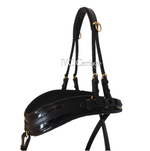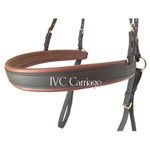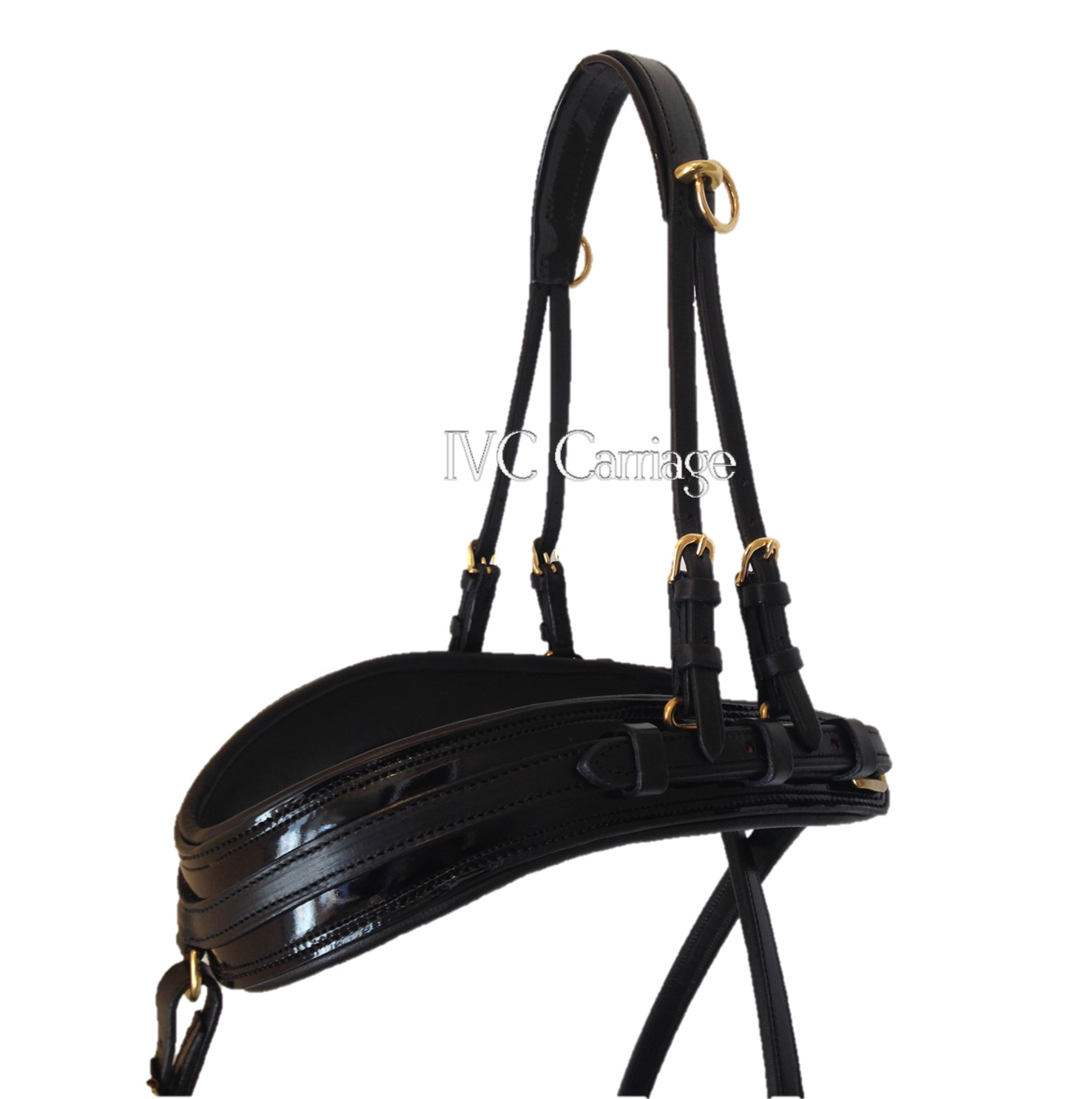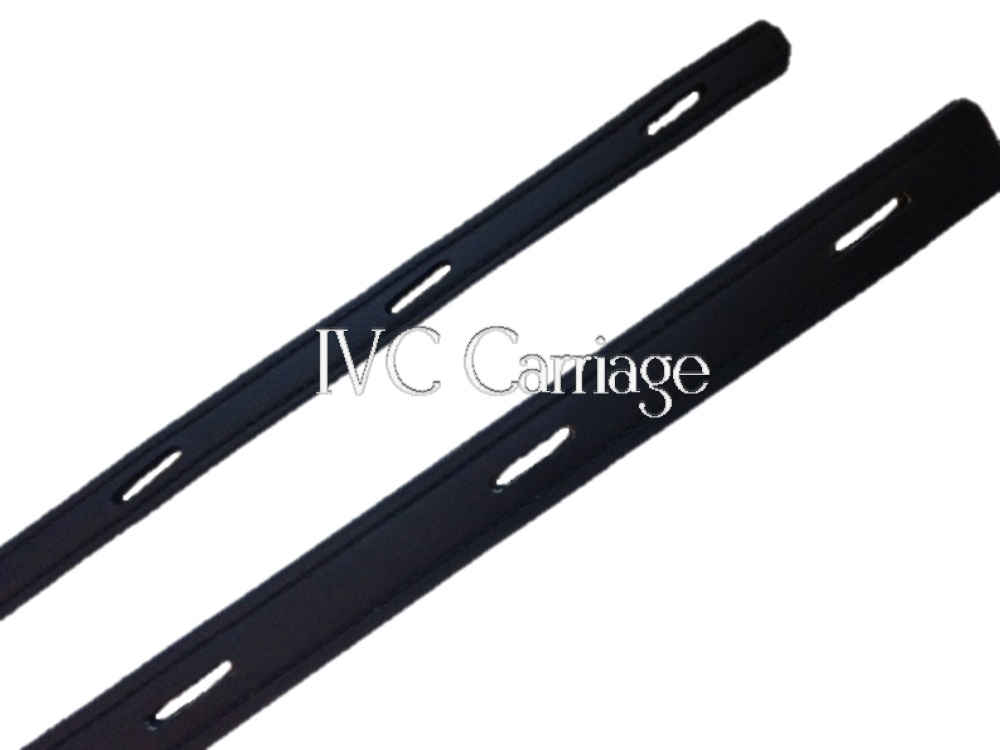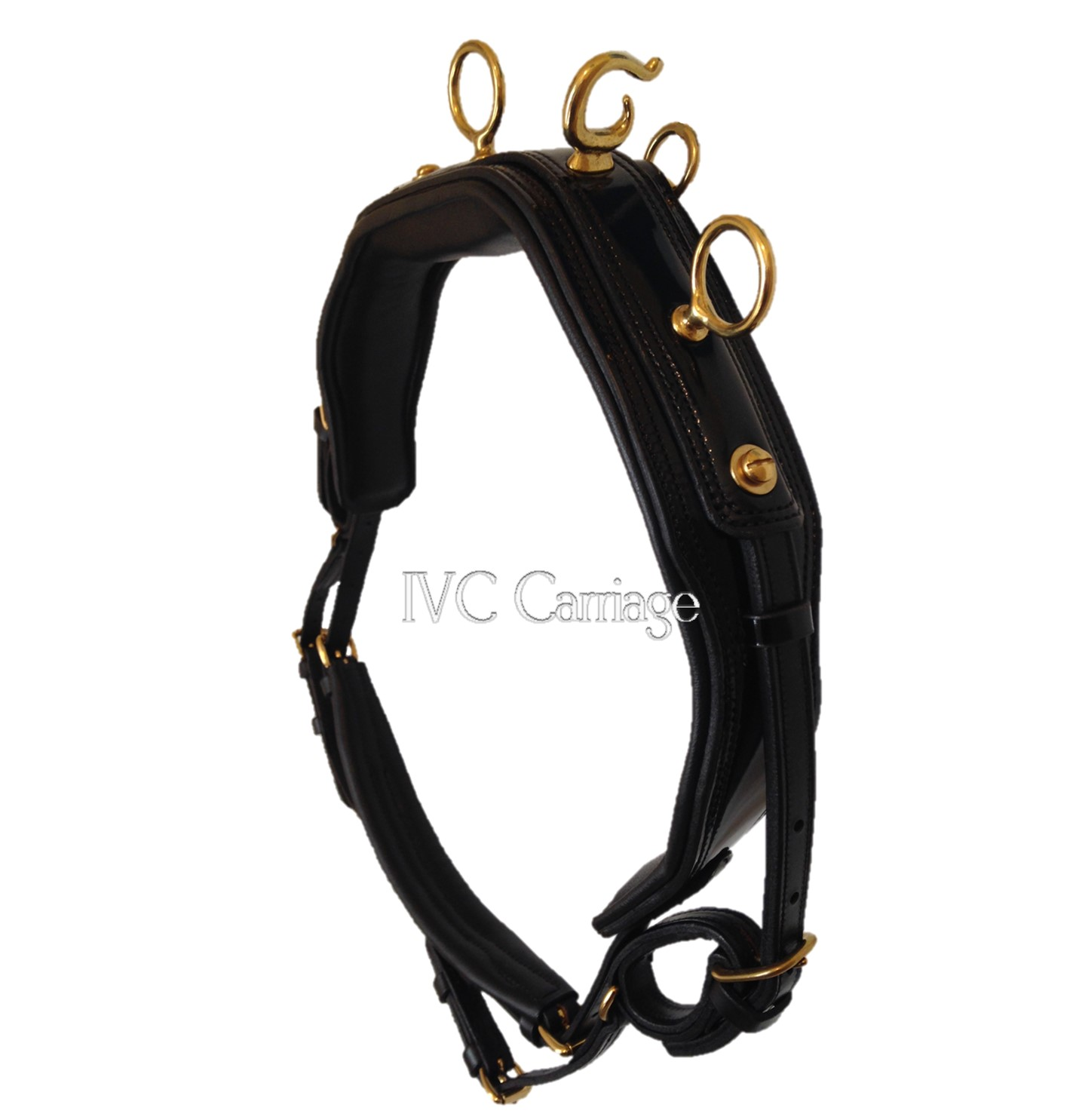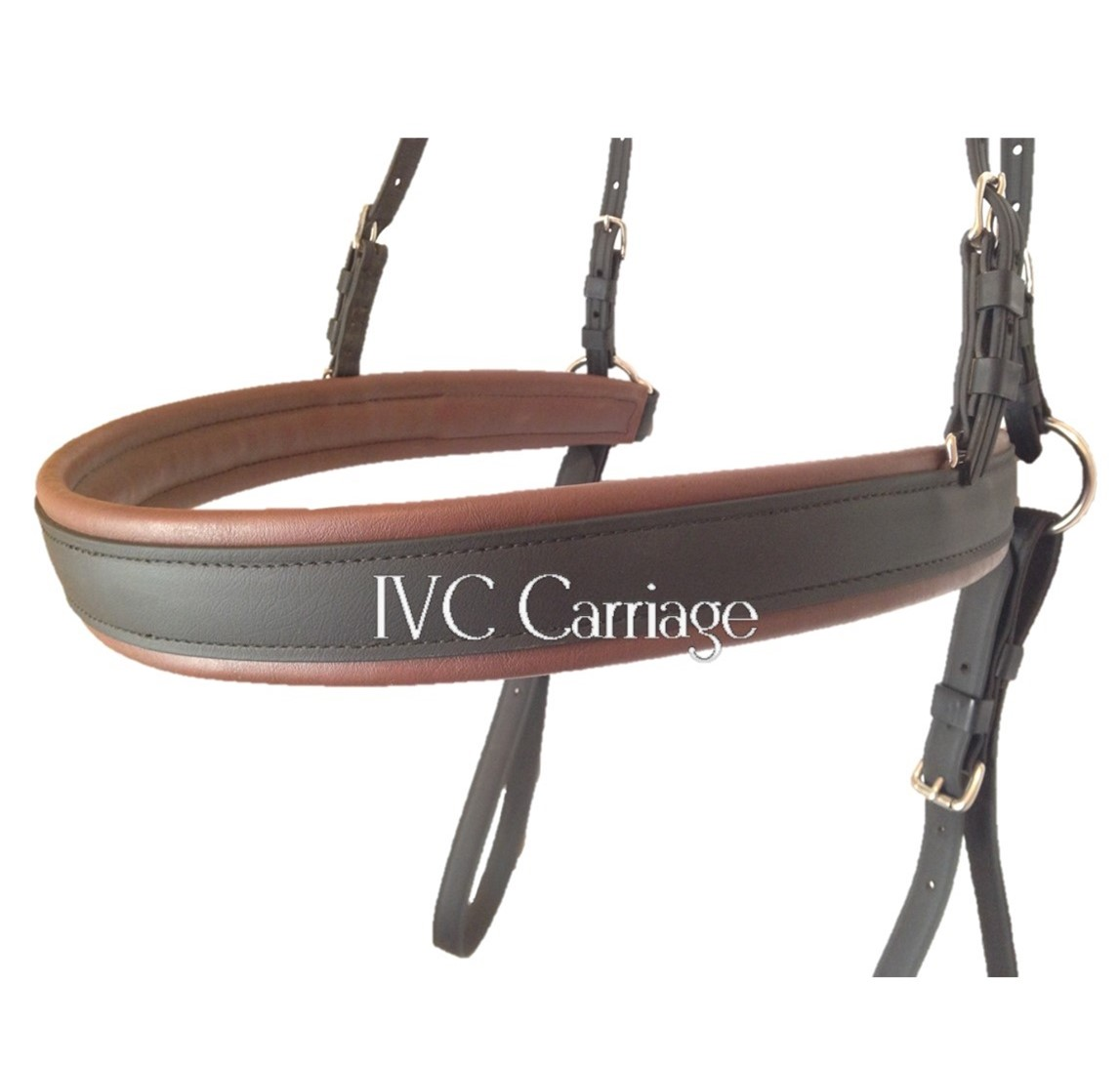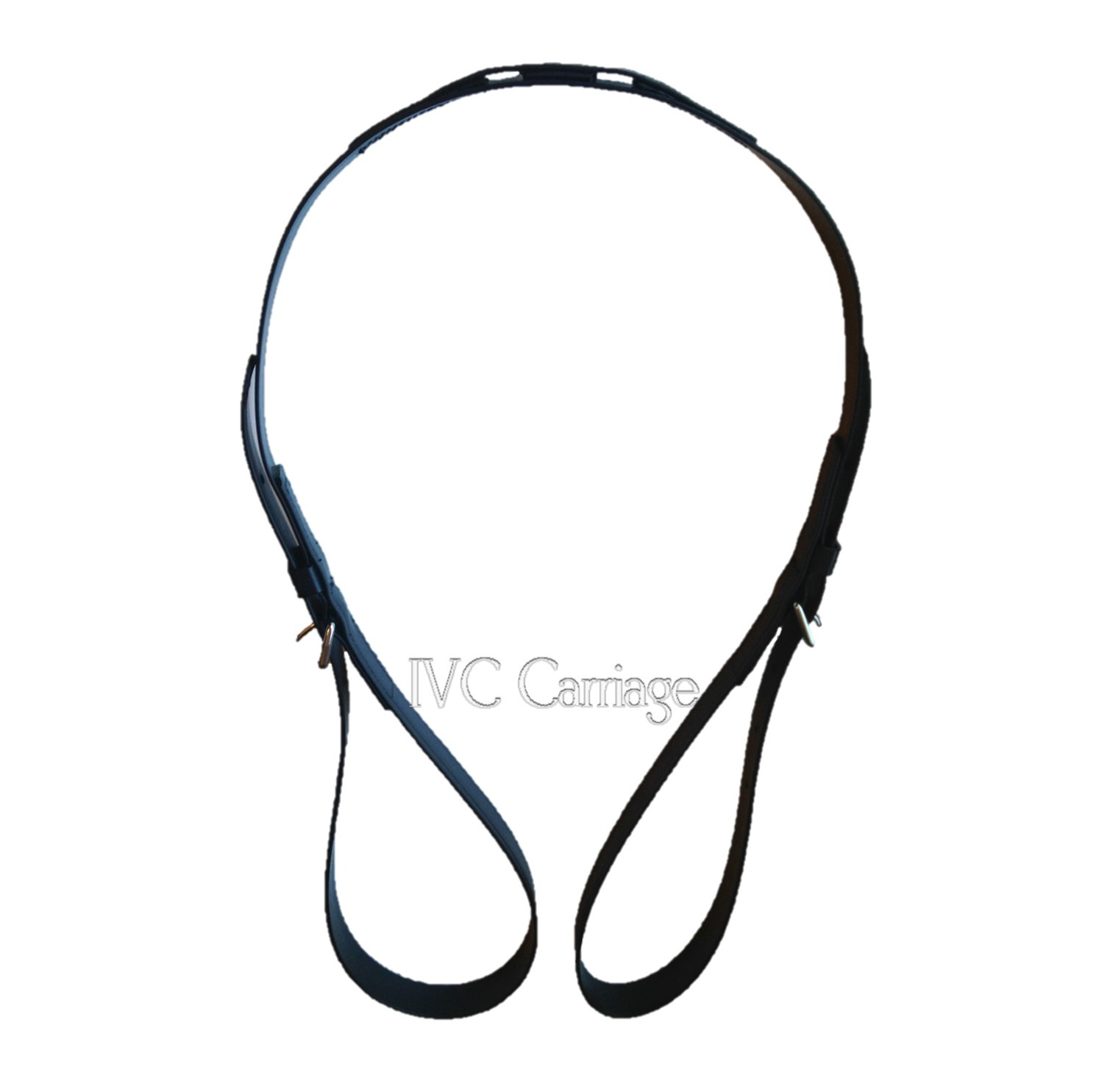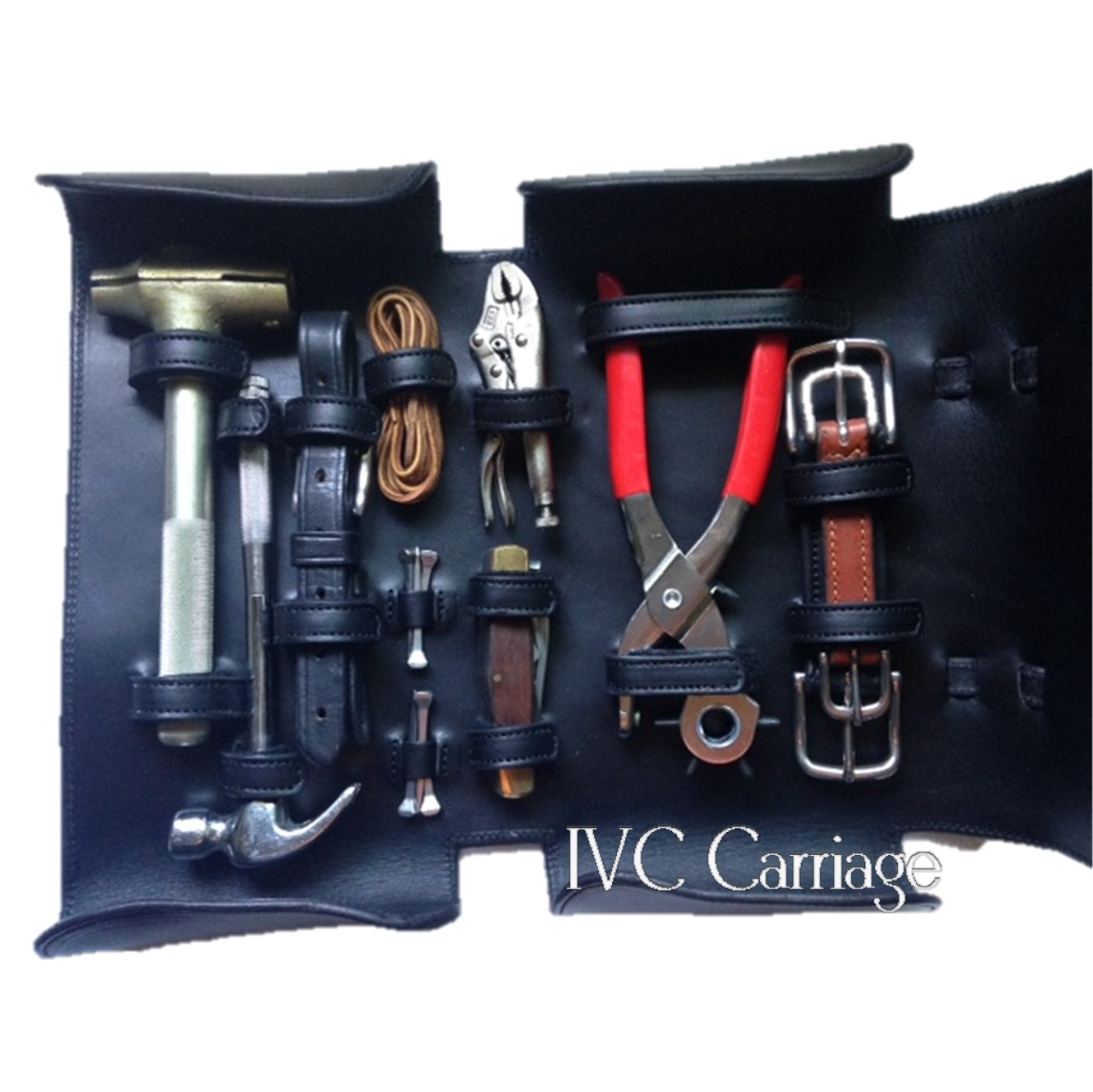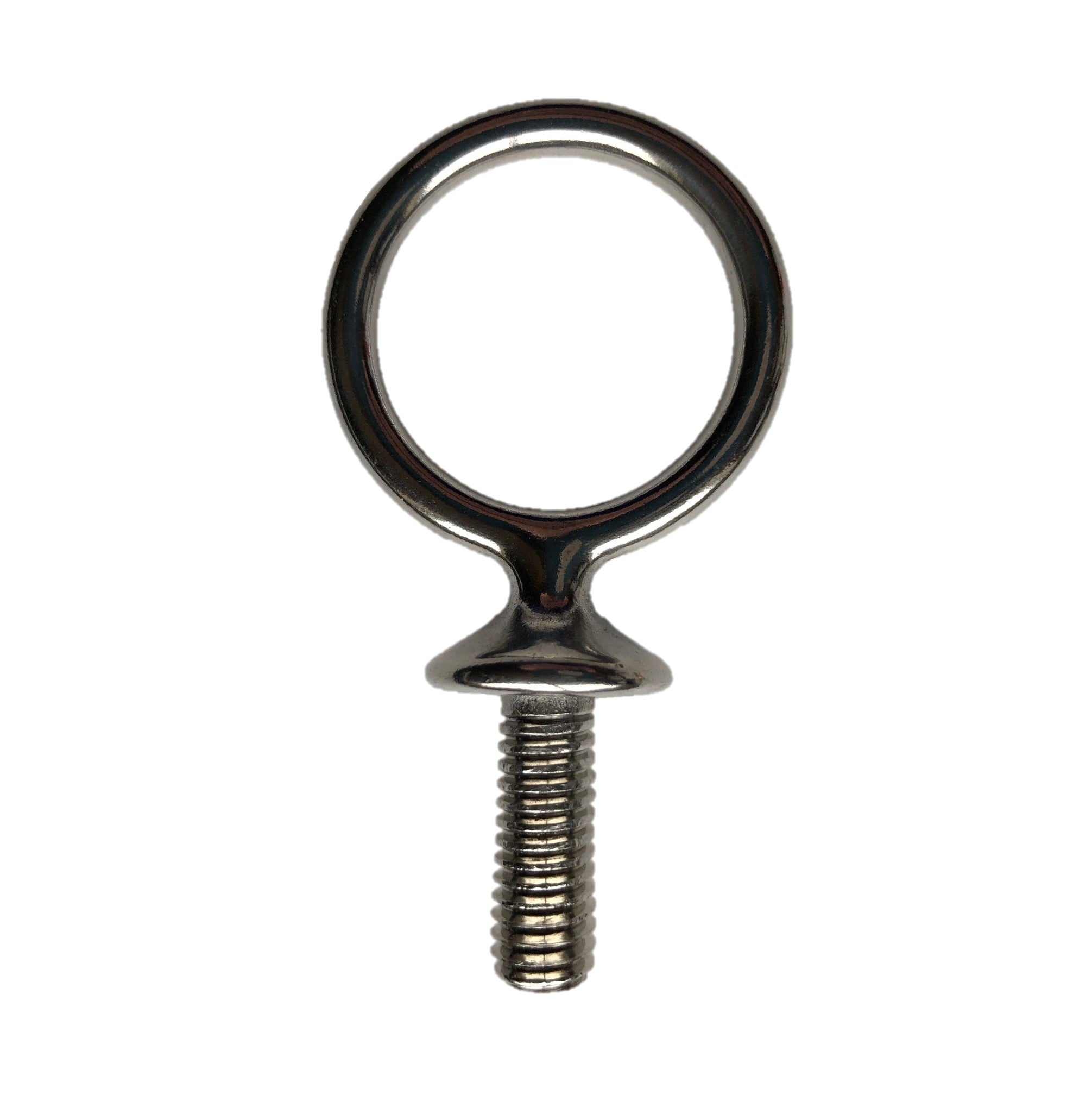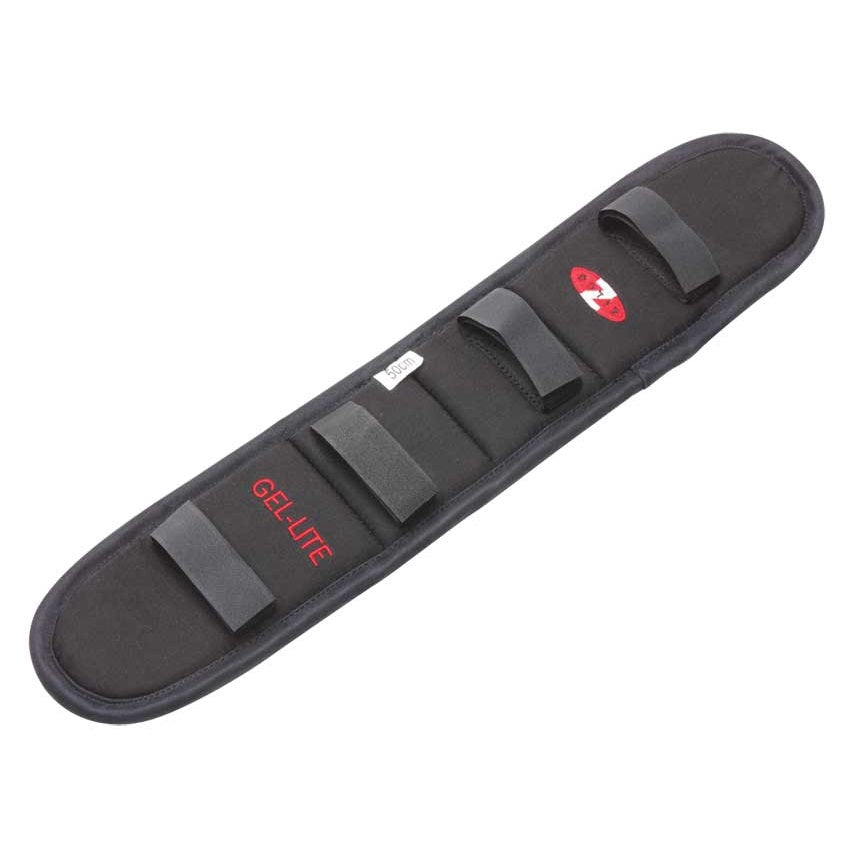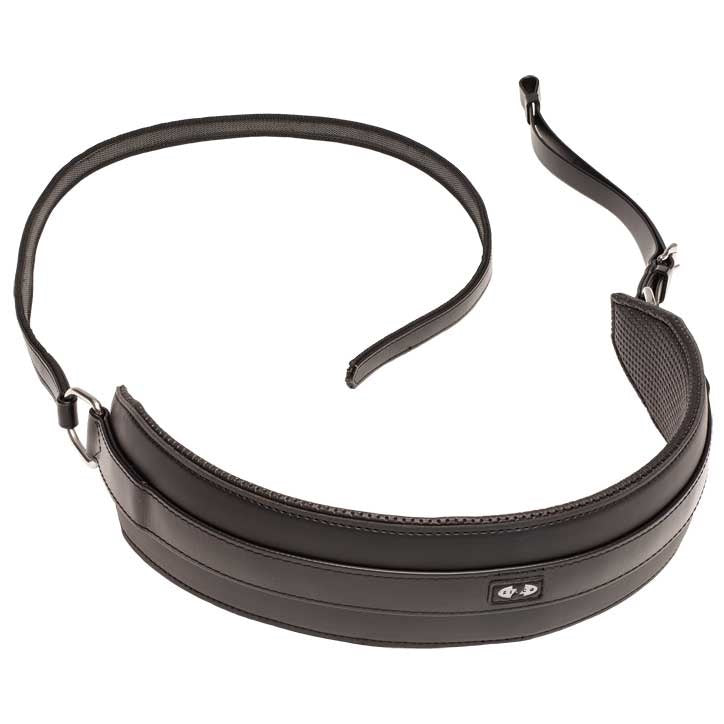Menu

The Mysterious Turnout Class
When people are new to carriage driving, the Turnout class can seem like a full-fledged mystery. First of all, there really isn’t much like it in the rest of the US equestrian world. There are no riding Turnout classes, or the same type of driving Turnout classes in open or breed shows unless they offer carriage driving classes. So when people are introduced to the carriage world, they have no background from which to draw to make a comparison.
The short answer to “What is a Turnout class?” can be that “It is judged on how great you look”. However, that makes it sound like you are a fashion model on a runway. There’s more to it than that. Regardless, let’s consider the fashion model example for comparison. Excluding some of the bizarre clothing, let’s think about models with more realistic outfits. The models are super clean, their clothes fit, and they perform well. Can you imagine if a model showed up on the runway with dirt all over (or even a stain/spot!), wearing frumpy homely old clothes, and tripped/fell while walking? This would be the equivalent of coming into a Turnout class with dirt on your carriage, with an old, cracked harness that doesn’t fit the horse, and having the horse schlep around the ring or canter in the class. It’s just not a pretty picture.

When we first started carriage driving, we didn’t even bother entering the Turnout class because we didn’t feel that our turnout was good enough. My first turnout is pictured at right. Another more experienced driver had told us that it was a “Money Game”, and that we needed a super expensive harness and lamps on your carriage in order to be competitive. She was wrong…and right…to a degree. It all depends on how deep the competition is. As I write this, we have just come back from the Villa Louis Carriage Classic, the largest, and one of the most prestigious carriage shows in the nation. The competition is deep. In the Open Horse, Small Pony, and Large Pony classes, there might be a good 1/3 to 1/2 of the class participants that have museum-quality antique carriages with finishes that rival show cars. The harnesses can be custom-made for those horses, are immaculate, and retail for $3-7k. The horses are well-schooled with drivers who have committed to the sport for a number of years. The average novice driver sometimes can’t afford that, and that’s ok!

One great thing about carriage shows is that there are Novice Driver divisions and also lower-level shows. Typical novice drivers are using decent quality harnesses that are in good shape, and usually two-wheeled road carts or Meadowbrooks like one of our other early turnouts pictured at left. It’s usually not until competitors have been competing for a few years that they make the commitment to the sport and start upgrading their equipment. That being said, if you know you want to compete in this sport and do it well for the long-run, it’s not a bad idea to get a really good harness from the start so that you don’t waste a lot of money on a less-than-average one just to get by for a few years while you gain experience in the Novice Driver division.

There are also other divisions at carriage shows that typically are “less competitive” in terms of turnout besides Novice Driver. The Very Small Equine division for equines less than 99 cm doesn’t typically have antique vehicles because there just weren’t too many made that small and so they aren’t available. That's not saying that there aren't nice VSE turnouts, there just generally aren't antique vehicles in that division. Junior drivers typically have less extravagant turnouts unless their families have been competing for a while or they are working with another long-term carriage driver. Novice Horse divisions don’t always have a lot of antique vehicles or super nice harnesses because a competitor doesn’t necessarily want to take their horse to its first show with that semi-priceless vehicle and custom-made harness! That being said, carriage drivers are doing more nowadays to show up in the ring with better harnesses and vehicles than in years past. That older harness with cracked patent leather and dull flat leather just won’t cut it in a deeply competitive Turnout class. However, as long as it is safe and fits decently, that older harness is fine for the other classes. It just will not help you be competitive in the Turnout class.
So what can you do to be competitive in a Turnout class? Let’s first look at the judging criteria. Turnout is to be judged 70% on condition, fit, and appropriateness of harness and vehicle, spares and appointments, neatness and appropriateness of attire and overall impression. 30% on performance, manners and way of going. That being said, let’s consider the perfect turnout using the above language:
Condition (Harness) – the leather is in excellent condition and is good quality vegetable-tanned; not cheap, imported, and smelly. It is well-conditioned. It isn’t dry or cracked and doesn’t have any damage. The whole harness is clean - meaning no dirt anywhere, no dust, and no manure. The flat leather is shined like a good pair of shoes. The patent leather does not have cracks, wrinkles, or streaks. The buckles are not tarnished and are polished to the point of gleaming. There is no metal polish residue on the harness. The perfect harness looks brand new but “broke in” enough to mold to the horse.

Condition (Carriage) - The carriage has no dirt, dust, lint, or grass clippings. The finish is shiny and glossy to the point of seeing your reflection in the paint or varnish. There are no nicks in the paint or varnish anywhere. The metal is polished and gleaming. The upholstery is in excellent condition. Rattles and squeaks are kept to a minimum. Obviously, it is unrealistic to not expect grass clippings on the wheels from a grass arena, but grass should not be stuck on the vehicle from a prior class a few hours before, or even on the floor from you stepping in the carriage before the class! A good judge can tell the difference between dirt and dust that got on the vehicle in the process of driving in the class, and what was stuck there last night! In the photo at right, you can see the dirt under the singletree and around the singletree caster, as well as the water spots on the black trim under the singletree strap. A good judge will see this dirt.
Fit – the harness is appropriately sized for the horse/pony. The horse is harnessed correctly. The saddle fits the shape of the horse’s back, provides spinal clearance, and is the right style/width for the vehicle. The collar provides adequate bearing surface for which the horse to pull and won’t cause soring. The harness is adjusted to fit the horse well and still be buckled into a middle (not either end) hole. The ends of the harness straps are not so long to be loose and flopping (and they aren’t electrical taped under to do so). The carriage is also appropriately sized for the equine.

Appropriateness – the style of the harness goes with the vehicle and the horse; a simpler harness goes with a more everyday vehicle and horse, while a more elaborate harness goes with a fancier carriage put to a fancier-moving horse. The paint or stain color is appropriate to the style of the vehicle. The striping is tasteful. The apron goes with the vehicle. The whip is the appropriate length, style, and quality to go with the carriage. All this requires a greater knowledge of the original purpose of specific styles of vehicles and the harnesses that go with them. A carriage harness is considerably different than a draft or breed show harness. “More” is not always better in the carriage ring. Again, this requires some research on your part.
Spares and appointments – having spares on the vehicle shows the judge that you are prepared for whatever happens, though if your carriage breaks in the show ring, they are not going to wait for you to get your wrench out to fix it. String gloves tucked under the seat on the right shows the judge that you are ready in case it rains. If the vehicle has lamp brackets attached, the correct style of lamps are on the brackets. You are better off having no lamps than the wrong lamps, and again, this takes research!

Neatness and appropriateness of attire – clothes are not covered in barn dirt. Shoes are polished and without grass clippings or dirt. Clothing fits well and is appropriate for the vehicle (again, this requires some research). Clothes are not gaudy, tacky, or the wrong color for the horse and turnout (just doesn’t look right). The jacket is tucked neatly into the apron without it gaping open. The gloves are brown and fit well. The tie or scarf is straight, and hair is neat with no flyaway strands sticking out.
Overall impression – this is where the extra details and quality separate one turnout from the next. Harnesses have extra details that judges notice and appreciate, like raised leather in certain areas, patent leather in appropriate locations, double stitching, doubled leather, etc. The apron might have extra details like trim and a monogram. The metal on the whip, buttons, and jewelry match the metal on the carriage. The more-rare antique vehicle, appropriately clean and in excellent condition, well-fitted, and well-driven will almost always be given more recognition than the same vehicle in reproduction form. That being said, if the rest of the turnout doesn’t match the quality of that antique vehicle, a reproduction vehicle turnout can trump the antique.

If you can’t achieve the perfection described above, don’t fret! Most people never do achieve that level of perfection with their turnout, but you should strive to get as close as you can if you want to do well. Again, consider what you ultimately have control over inexpensively…your cleanliness. If nothing else, be clean! If you don’t know what clean is, ask someone who does. I know of many drivers who think they are clean because they literally don’t notice the dirt that others do. They don’t see the chips in the paint, the water spots on the carriage, nor the dirt in the cracks between the spokes and the felloes (rims) of the wheels like in the photo. There are products available to help you clean your harness and vehicle well.
In the process of your research to prepare for your Turnout class, be careful not to get hung up on small details that aren’t really going to have as much bearing as you think. There are some more historical sources that describe the styles of the buckles or the shape of the blinkers on certain harnesses, the colors of aprons, etc. Yes, there are literally a few judges who have such an affinity for historically accurate turnouts that they give “extra credit” to those that meet those criteria, but the above cleanliness and fit parameters are still going to trump the style of your buckles and blinkers. If your turnout isn’t clean and polished, it doesn’t matter how accurate you are.
Also remember the quote attributed to Thomas Jefferson: “In matters of style, swim with the current; in matters of principle, stand like a rock.” For example, just because you like extensive bold striping on your carriage or don’t like patent leather doesn’t mean that the judge will just ignore that. It’s fine if you like it that way, but there are certain attributes of harness and vehicles that are expected. When the judge sees something looking different than what is typical for a high-quality harness or carriage, they may take that into consideration in the placings. In the same aspect, if you feel that something is absolutely necessary for the better safety, performance, or comfort of your horse, don’t change it just because one judge makes a comment. Gullet straps on bridles are not traditional equipment, but we know that they do make a difference in helping to keep the bridle on the horse’s head! (Most judges recognize this now, so it’s not something that should hurt a turnout in the ring.)

While the majority of the Turnout class is about how great you look, there is a smaller percentage that still considers the performance of the horse. The judging criteria lists that 30% is on the performance, manners, and way of going of the horse. This means that, again, a perfect turnout is going to have a horse that moves to match the vehicle style, meaning that a lower-going horse is appropriate to a sporting or country vehicle, while a higher-moving horse is appropriate to a park vehicle. You may love that phaeton, but your Quarter Horse is going to look ridiculous in front of it to an educated judge. However, the QH’s sweeping way of going may be just right to cover ground in a road cart. Also, can he perform the gaits requested of him in the Turnout class? Does he have three distinct trots? Can he get through the class without running over anyone or anything? If the rest of the turnout looks perfect and he takes a canter step or two, the judge may still reward your turnout over the one who had the perfect performance but isn’t as clean or well-maintained as yours. In the case of the photo at left, I had already won the class and the mare was reacting to the crowd. Had she acted like that during the judging, we may not have won.

While planning for the Turnout class is an art, preparing for the Turnout class is the perfectionist’s dream. In judging a Turnout class, an educated judge has an idea of what perfection looks like, and the closer you can get to it, the more likely you are to place well. For those who are not perfectionists, you either need to find someone who is to help you or acknowledge that the Turnout class isn’t something that you are likely to win. Doing really well in a Turnout class takes work! There are a lot of hours cleaning and polishing that goes into a great turnout. If cleanliness isn’t your strong suit, you may have to find someone who really is that picky to get your turnout ready if you want to do well. Sometimes that work also takes some financial investment. It may mean investing in a new harness or redoing the finish on your vehicle. However, some people consider Turnout their “throwaway class”, meaning they don’t expect to do well but just use it to get their horse in the arena for experience before the other classes. That’s ok, too. Just don’t get mad when someone else pins above you. All in all, you want your turnout to “stick out in a good way” in a Turnout class. You don’t necessarily need to do everything exactly the way everyone else does, and in most cases, you don’t want to. You want to be just a little better than everyone else to take home that blue ribbon in Turnout.

- Choosing a selection results in a full page refresh.




